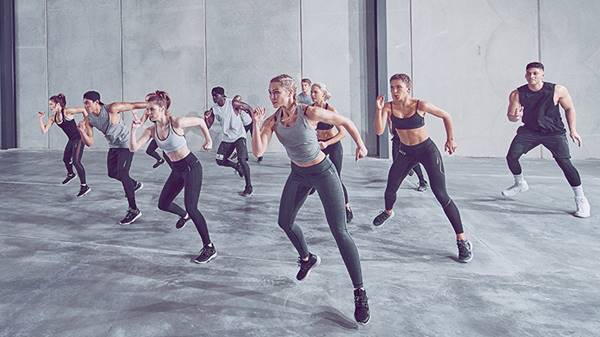
When it comes to exercise and fitness, the general consensus is straightforward: get optimal results as quickly as possible, while investing as little time and work as possible. It’s the philosophy of efficiency which dominates one’s quest for becoming a healthier, more physically capable, and more confident version of oneself. However, most people are stuck in a loop of long office hours, house work and juggling various everyday tasks, all of which leaves little time to devote oneself to exercise and physical activity. For those in need of fast, effective and dynamic workouts which simultaneously build explosive muscle and help burn away that stubborn fat, High Intensity Interval Training (HIIT) might be the perfect weapon.
What is HIIT?

High Intensity Interval Training was developed in 1996 by Dr. Izumi Tabata, head coach of the Japanese speed skating team. The core strength of HIIT is the fusion of anaerobic strength and power exercises with typical aerobic cardio exercises in one training cycle. Tabata’s approach to training, grounded in boosting one’s cardiovascular fitness and building lean, functional muscle mass, comprises of two distinctive components:
- High intensity action – the key is to sustain intermittent short bursts of intense activity, which nearly almost reach the limits of the exerciser’s current physical limits (going as high as 90% muscle capacity, equaling 170% of maximal oxygen consumption).
- Interval dynamic structure – representing the combination of the aforementioned high intensity bursts with lower intensity recovery periods
HIIT protocols and equipment
Since its inception, HIIT has been tweaked and built upon by various physical fitness experts and world-class athletes. Some of the most common protocols related to HIIT are named after their authors: Timmons, Tabata, Little, Trapp, Gibala, for instance. These doctrines offer different, yet complementary, exercise patterns which exercisers can use to add variety to their workouts, thus avoiding becoming bored, while constantly forcing their bodies to adapt to new stimuli and progress. For example, the original Tabata protocol consists of:
- 3 minutes of warming up and mild stretching (not counting towards total workout time)
- 20 seconds of high intensity sprinting
- 10 seconds of walking, for recovery
Steps 2 and 3 are then repeated in this same pattern 7 times each, with no stationary time in between, for a total workout duration of 4 minutes. After that, post-workout stretching is recommended.
HIIT can be performed outdoors – by simply running – or in a gym, by utilising various gym equipment, such as treadmills and stationary bicycles (most of which have user-friendly predefined HIIT programs), elliptical and rowing machines, cross-trainers, medicine balls, kettlebells, dumbbells and ropes.
Hitting the HIIT
HIIT can be practiced by beginners and seasoned athletes alike. Here are some simple tips on how to approach HIIT and incorporate it in your workout:
- Assess which type of HIIT suits your body best – people with some extra weight, as well as people suffering from joint pain (especially knees) should opt for stationary bicycles or elliptical machines, instead of running. This reduces joint stress and minimizes the chance of injury.
- Open each session with a proper warm up to prevent injury and prepare your body for intense, strenuous bursts of activity. Depending on the protocol, the length of the warm up session can vary between 3 and 10 minutes.
- It is wise to start with moderate or even light trainings, and then gradually increase the tempo each workout. Progressive overload is crucial for achieving better results, but it must never be forced at all costs.
- Post-workout stretching is a good way to reduce muscle soreness and increase flexibility. It enhances blood flow and oxygen supply, making subsequent workouts more efficient.
- Don’t be afraid to experiment – changing your HIIT routine, for instance every 2 months, offers additional stimuli for both the body and the brain. Keeping your workouts interesting and fresh helps you progress and push your limits – however, keep in mind that shuffling them too often can be detrimental.
HIIT is a great, balanced training regimen for anyone aiming to build lean muscle, burn excessive fat, boost their metabolic rate and be their healthiest, fittest self. It is more fun and more efficient compared to steady state training and is a great start for novices, as well as a welcome bonus for experienced exercisers.

Leave a Reply